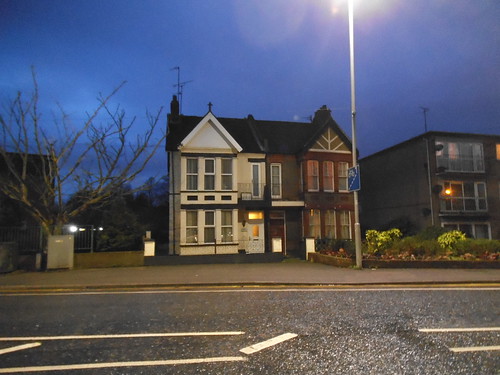Community team gives recommendations for Sergeant Bluff-Luton school updates
Luton #Luton

SERGEANT BLUFF – Since 2006, the Sergeant Bluff-Luton Community School District has been attempting to pass voter measures to upgrade the high school or construct new facilities. In that time, the voters have rejected six attempts to raise local property taxes to improve school facilities.
After the most recent attempt in 2021 failed, the district administration decided to take a different approach to the topic and started a process of surveying what the community wants and why all of the previous bonds failed.
The process included a variety of listening sessions for the community, staff and students, surveys and a specific committee focused on the district facilities.
Part of that work included the creation of a community engagement team. That committee met various times over the summer, touring the various facilities, getting information about the state of the district, learning the financial cost of a new building, learning how schools are financed and more.
People are also reading…
A public meeting was held Wednesday for that team to present their findings and recommendations to the school board. The committee did not give a specific recommendation as to whether or not the district should pursue a bond, but instead pointed out specific areas they wanted the district to address.
The group wanted to leave the recommendation open-ended for the school board to decide how to proceed with the information.
“They wanted to give you some guidelines to think about as you as you move forward and start that planning process, looking at long term facility planning,” Darren Overton, with SiteLogIQ said. The district hired SiteLogIQ, a facility solutions company, to help get the community engaged and review the district.
One main suggestion was the group believes the primary building should not be a part of the future of the district, given the state of the building and the numerous issues it faces.
In the high school, some of the main issues the group felt need to be addressed include; HVAC updates, making bathrooms ADA infrastructure updates, more classroom space, science lab upgrade, electrical updates, new weight room, more parking, updates to the gym, locker room and training room, more storage space and updates to the trades facilities.
At the middle school, some of the main issues that need to be addressed include; space for special education needs, updated security to entries, more multi-purpose space, kitchen updates, new utilization of library space and locker rooms.
At the elementary school, the main areas of focus were: keeping it the elementary school, updating the space for special education, more storage updates, varsity sports updates, and playground and pickup updates.
The group felt everything on their list was a priority, but ranked those by urgency and value to the district.
The group felt the community was not going to approve a brand new high school, and instead, would potentially approve utilizing the current facilities and adding to them. One potential option one of the committee members said was creating an addition to the 3-5 building and incorporating kindergarten through second grade, as well as sixth grade.
The group then proposed connecting the high school and middle school with a larger cafeteria, creating more space in both buildings. Lastly, they proposed creating a new weight room that is safer for the students.
The committee explained the process they underwent throughout the summer, the concerns they had with each building in the district, and their ranking of priorities.
The most recent attempt for funding to improve the district facilities was in 2021 was the closest the district got to getting approval, with 49 percent of voters in favor of a Physical Plant and Equipment Levy, or PPEL, for $12.3 million. The goal was to remodel the high school and build an addition, make improvements to the primary school, and create a baseball, softball, and tennis complex.
The previous attempts included:
Because the bonds called for property tax increases, they required a “super majority” of at least 60 percent. None of the previous measures exceeded a 50 percent approval rate.
After Superintendent Chad Janzen started last year, the school board and district administration discussed slowing down the process.
“Starting over from the beginning, and listening and engaging the community in this process and seeing what it is that the community wants us to do, and get real feedback from them and try and get some more buy-in,” he said.
The main reason voters have given for the previously failed attempts to pass bond issues are the increase in taxes and the high rate of open enrollment in the district.
‘); var s = document.createElement(‘script’); s.setAttribute(‘src’, ‘https://assets.revcontent.com/master/delivery.js’); document.body.appendChild(s); window.removeEventListener(‘scroll’, throttledRevContent); __tnt.log(‘Load Rev Content’); } } }, 100); window.addEventListener(‘scroll’, throttledRevContent);
Get our local education coverage delivered directly to your inbox.